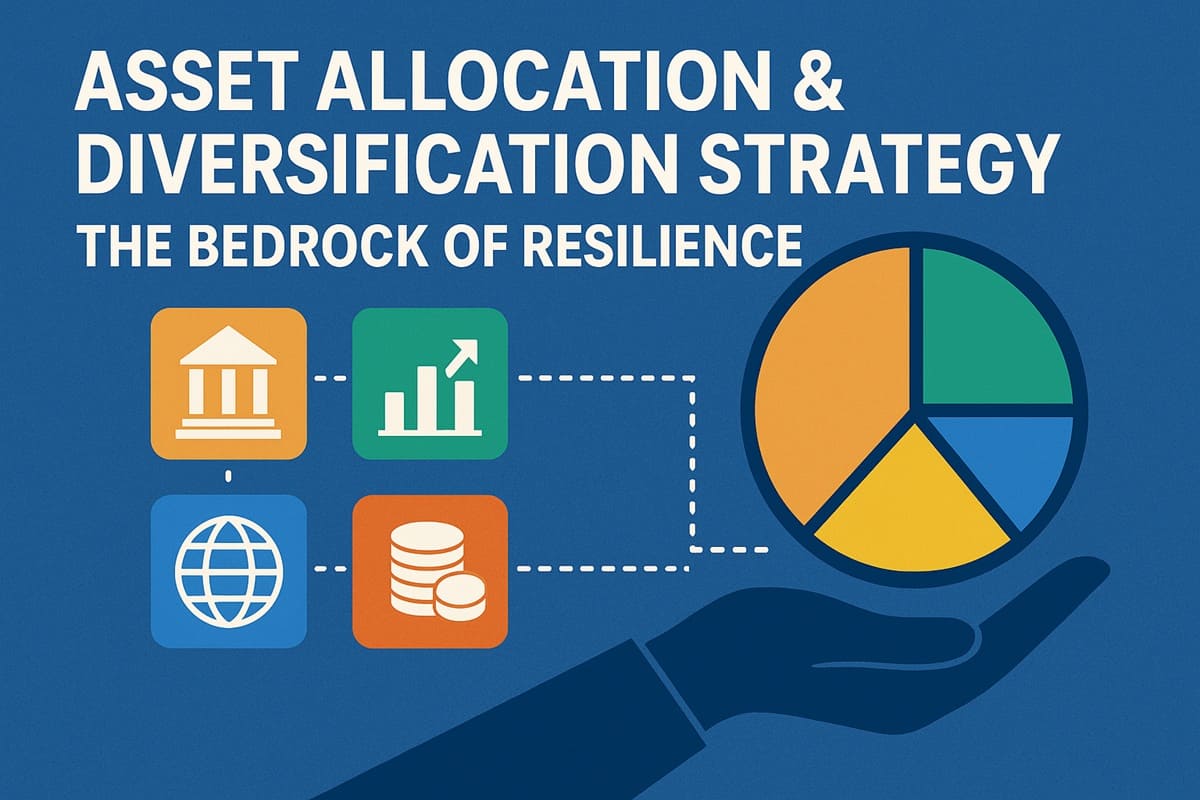In today's markets, investors face an extraordinary range of opportunities—and challenges. Rising inflation, higher interest rates, geopolitical uncertainty, and rapid technological change have reshaped how people think about allocating capital. While the tools and platforms may be modern, the core playbook of investing strategies still rests on a handful of well-tested approaches, each with its own risks, rewards, and following.
This article explores the most popular investing strategies in today's market, why they have captured the attention of both individual and institutional investors, and how they are being applied in practice.
Value Investing Strategy: Rediscovered in 2025

The classic value investing strategy, popularised by Benjamin Graham and Warren Buffett, is once again enjoying the spotlight. It involves seeking companies whose shares appear undervalued relative to their intrinsic worth, often judged by measures such as low price-to-earnings ratios, strong balance sheets, or resilient cash flows.
In 2025. the case for value has strengthened. With inflation still elevated and interest rates higher than the previous decade's average, investors are rediscovering the attraction of solid, cash-generating businesses. UK equities, for instance, have been trading at discounts relative to global peers, giving value-focused funds fresh opportunities to deliver outperformance.
Value investing is not glamorous, but in an era of economic volatility, it has regained credibility as a steady, conviction-based investing strategy.
Growth Investing Strategy: Still a Magnet for Ambition
If value investors look for bargains, growth investors chase tomorrow's stars. This investing strategy focuses on companies expected to deliver above-average revenue and earnings growth, even if their current valuations look expensive.
Tech companies, renewable energy firms, and disruptive innovators remain magnets for growth capital. Younger investors, particularly Gen Z, have leaned heavily into growth strategies—often favouring stock markets over traditional assets such as housing. Their appetite for future-oriented sectors reflects not just return potential, but also a generational preference for innovation and change.
Growth investing has its risks—valuations can collapse if lofty expectations are not met—but it continues to be one of the most popular investing strategies in the modern market.
Dividend & Income Investing Strategy: Reliable Yield in Uncertain Times
The dividend investing strategy appeals to those who prefer regular income alongside capital appreciation. It involves targeting shares that pay consistent dividends, as well as income-generating assets such as bonds or real estate investment trusts (REITs).
In a world where uncertainty prevails, the stability of dividend streams has made this approach a favourite for retirees and risk-averse investors alike. The strategy also benefits from reinvestment—compounding dividend income into additional shares—creating long-term wealth accumulation.
As such, dividend investing is seen as one of the most reliable investing strategies for building steady returns.
Dollar-Cost Averaging Strategy: Taming Volatility One Pound at a Time

Timing the market is notoriously difficult, which is why the dollar-cost averaging (DCA) investing strategy remains a cornerstone for many. By investing a fixed sum at regular intervals, investors buy more shares when prices are low and fewer when prices are high, smoothing out volatility over time.
This method has particular appeal for beginners and long-term savers. It also removes emotion from decision-making, ensuring investors stick to a plan rather than being swayed by short-term noise.
In volatile environments like 2025. DCA stands out as one of the most practical investing strategies for ordinary households.
Momentum Investing Strategy: Riding Market Trends with Tactical Insight
The momentum investing strategy is grounded in behavioural finance: investors often underreact to news, meaning rising stocks may continue rising, and falling ones may continue sliding.
Momentum investors capitalise on these trends, buying shares with upward momentum and selling laggards. Traders often use technical indicators such as moving averages or relative strength indexes to time entries and exits.
Although momentum can be risky during sharp reversals, it has a loyal following thanks to its strong academic evidence and the ability to produce outsized returns during trending markets.
Contrarian Investing Strategy: Swimming Against the Crowd
The contrarian investing strategy takes courage. Instead of following the herd, contrarians deliberately seek opportunities where others see only risk—buying when markets panic and selling when exuberance takes over.
This approach has paid off handsomely in past crises, where those willing to buy distressed assets at deep discounts often reaped the rewards when sentiment shifted. However, it requires discipline, patience, and the ability to withstand periods of unpopularity.
In 2025. contrarian investors are looking closely at overlooked markets such as emerging economies and cyclical industries currently out of favour.
Thematic & ESG Investing Strategy: Aligning Purpose with Profit
Another fast-growing approach is the thematic and ESG (Environmental, Social, Governance) investing strategy. Here, investors focus on big-picture trends—such as renewable energy, artificial intelligence, or ageing demographics—or select companies based on sustainability and ethical practices.
For younger generations, particularly millennials and Gen Z, thematic and ESG strategies provide a way to align portfolios with personal values while still pursuing returns. With increasing regulation and consumer demand for sustainable practices, this strategy is likely to remain a powerful force shaping capital flows.
Asset Allocation & Diversification Strategy: The Bedrock of Resilience

Regardless of one's style, nearly all professionals emphasise diversification as a core investing strategy. By spreading money across equities, bonds, real estate, commodities, and global markets, investors reduce the risk of being overly exposed to one sector or region.
The asset allocation strategy is about determining the right balance for an individual's risk tolerance and financial goals. In uncertain environments, diversified portfolios are more resilient, providing a smoother ride than concentrated bets.
Rebalancing Strategy: Keeping Your Portfolio in Tune
Even the best portfolio drifts from its original allocation as markets move. The rebalancing investing strategy ensures investors periodically realign holdings back to their desired weights.
For instance, if equities rally, they may come to represent a higher percentage of a portfolio than intended. Rebalancing—either on a calendar basis or when thresholds are breached—restores balance, controlling risk while maintaining discipline.
This strategy is simple but effective, reinforcing long-term stability.
Robo-Advised Investing Strategy: Automating Smart Exposure
Finally, the digital era has popularised the robo-advised investing strategy, where algorithms build and maintain portfolios based on risk tolerance and goals. These services use diversification principles, often incorporate low-cost ETFs, and automatically rebalance as needed.
With robo-advisors managing over a trillion US dollars globally, they represent a rapidly expanding trend—particularly among tech-savvy investors who want simplicity and cost-efficiency without sacrificing strategic rigour.
Conclusion: Choosing the Right Investing Strategy

The modern investor has more options than ever before. Whether one favours value's discipline, growth's ambition, dividend stability, or thematic conviction, the key is to select an investing strategy aligned with personal goals, risk appetite, and time horizon.
Crucially, these strategies need not be mutually exclusive. Many of the most successful portfolios blend several approaches—using diversification, rebalancing, and automation as the foundation, then adding elements of momentum, contrarianism, or thematic tilts for extra flavour.
In today's market, the most popular investing strategies endure because they balance human psychology, financial fundamentals, and disciplined process. The art of investing lies not just in choosing a strategy, but in sticking to it through the inevitable ups and downs.
Frequently Asked Questions (FAQ)
1. What is the best investing strategy for beginners?
For beginners, a simple and effective approach is the dollar-cost averaging strategy, often combined with broad diversification through index funds or ETFs. This helps smooth out market volatility and reduces the risk of poorly timed investments, making it easier to build wealth steadily over time.
2. Can I use more than one investing strategy at the same time?
Yes. Many investors blend strategies—for instance, holding a core diversified portfolio of dividend and growth stocks, while allocating a smaller portion to thematic or momentum ideas. The key is ensuring that each strategy aligns with your financial goals and risk tolerance.
3. Which investing strategy is the safest?
No strategy is entirely risk-free, but dividend investing and diversified asset allocation strategies are generally considered among the most reliable. They prioritise stability and income while reducing exposure to the ups and downs of any single stock or sector.
Disclaimer: This material is for general information purposes only and is not intended as (and should not be considered to be) financial, investment or other advice on which reliance should be placed. No opinion given in the material constitutes a recommendation by EBC or the author that any particular investment, security, transaction or investment strategy is suitable for any specific person.





























